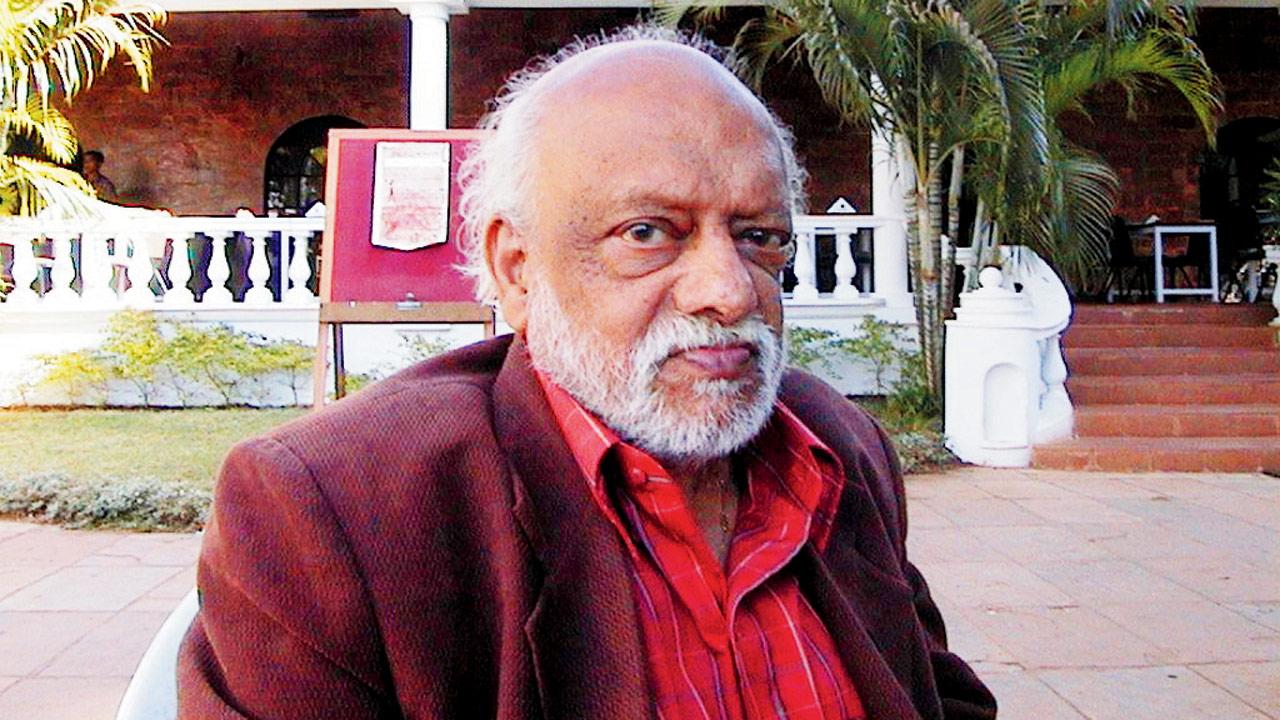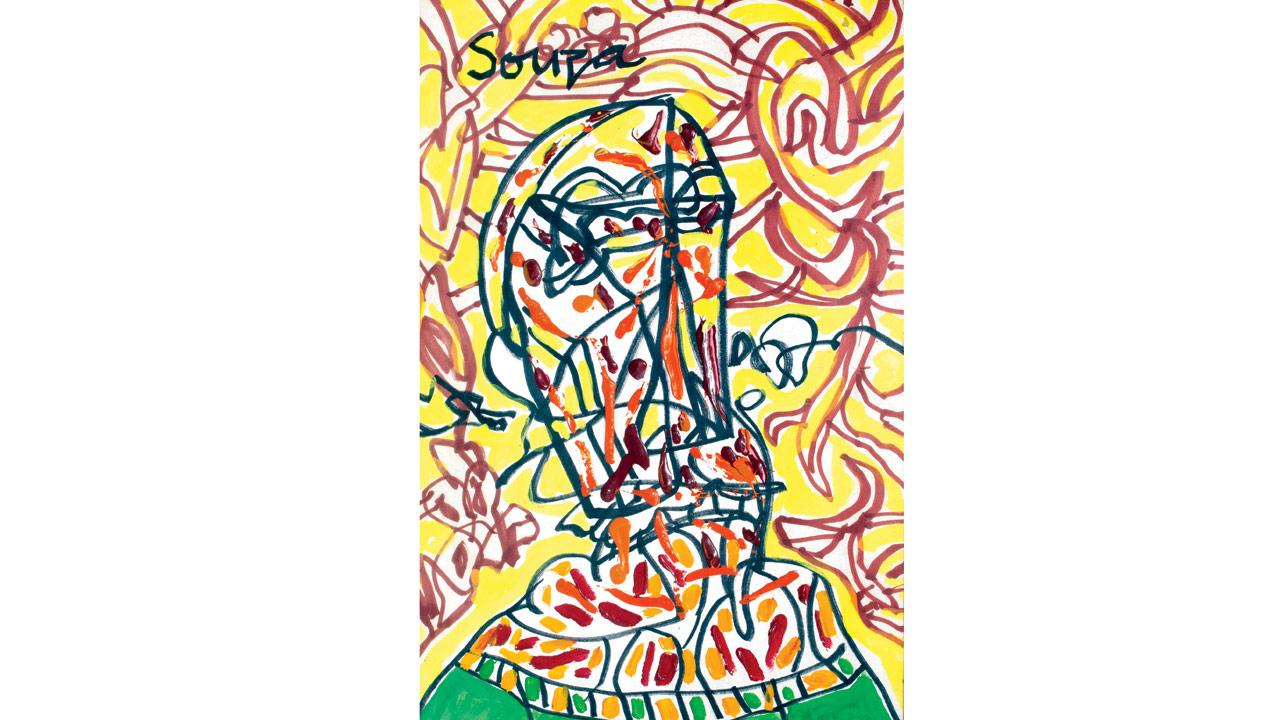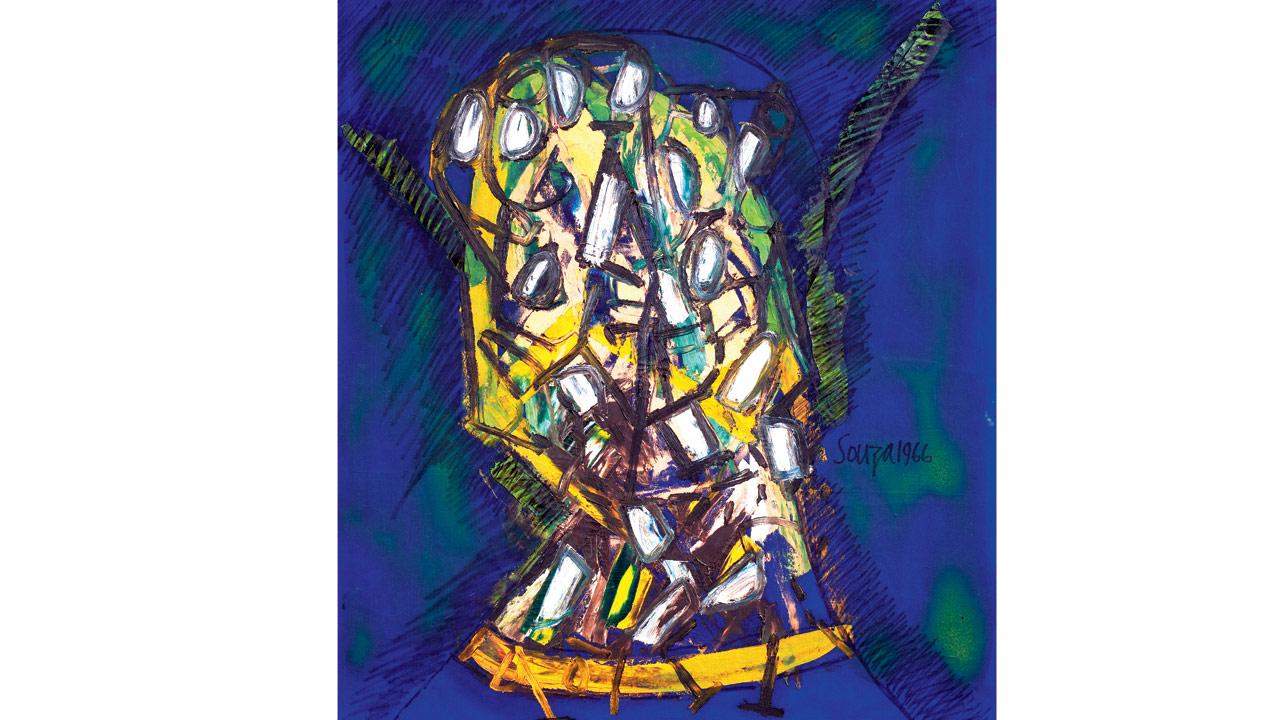As some of his prominent works go under the hammer at an auction today to celebrate his centenary year, FN Souza remains one of India’s most prominent modernists. We reach out to gallerists and curators to retrace the artist’s journey

Untitled (Pieta), 1987. Pic Courtesy/Saffronarts
Shelly was expelled. Van Gogh was expelled once. Ostrovsky was expelled once. Palme Dutt was expelled once. I was expelled twice,” wrote FN Souza in a typically daring statement in his catalogue to the 1948 exhibition at the Bombay Art Society Salon. A century after his birth in 1924 in Saligao, Goa, Souza remains one of the most expensive and prominent names for collectors and art lovers across the country.
 Minal Vazirani
Minal Vazirani
“Souza is, without doubt, a trailblazer in modern Indian art, and that can’t be declared in the past tense. His work drew from diverse, often classical, influences,” says Minal Vazirani, president and co-founder, Saffronart. To celebrate the centenary of Souza’s birth, the venture is set to host an auction of 48 lots of Souza’s works. Unsurprisingly, he remains an artist in demand, she reveals. The auction will feature works that are ‘evocative of Souza’s inner workings,’ Vazirani emphasises.
The man, the enigma
But what makes him such an attraction? Early 1940s in the city of Bombay was rather complex, admits art curator Ranjit Hoskote. Calling it a ‘global colony’, Hoskote remarks, “It was a very fertile and febrile city at the time.” To this, Souza brought boldness. “What he brought into the Indian scenario was boldness in addressing the erotic and questions of death and mortality.”

FN Souza. Pic Courtesy/Wikimedia Commons
It was in the city that the artist founded the Progressive Artist’s Group, a movement that would shape India’s modernist outlook in art. “The group was deeply influenced by their surroundings and each other’s ideas,” notes Vazirani. The works on auction, she shares, were curated to highlight his lesser-known inspirations. Hoskote points out an influence of Byzantine art in Souza’s famed iconographies, as well as art from the Gupta period.
Passing through Bombay
Yet, the city is a passing glimpse in FN Souza’s artistic memory. Gallerist Dadiba Pundole points out that Souza left the city for England early in his career. “He lived very close to Crawford Market. But during the time he lived there, he was still painting Goa through his landscapes. He was only in the city a short while,” he says.

FN Souza, Fireman 9 - 11, 2001. Pic Courtesy/Art Musings
But the presence was always there. Hoskote remarks that he grew up hearing the artist’s names in conversations between his parents. “The Artist’s Centre was one of his many hangouts back in the early years. It was a big locus for them [PAG group]. There was Chetana, now a restaurant, and of course, Jehangir Art Gallery and the Kala Ghoda neighbourhood.”
Pundole recalls dropping Souza off at a hotel in Parel, after their first meeting in 1984. “He [Souza] clearly preferred living among the crowds. That environment fascinated him more than other parts of a city, not just Mumbai,” he admits.

Untitled (Head with Horns), 1966
Similarly, for Sangeeta Raghavan, gallerist, Art Musings, Colaba, recalls him as an old family friend dropping by and working out of the house. She shares how the artist would often stay with the family during his visits to the city. “I have a small stack of correspondence that they [my father and Souza] shared, letters, cards. I remember one evening over dinner at my parent’s place, he spontaneously started doing sketches of some friends. It was quite a treat watching him,” she shares. 100 years later, perhaps, Souza might continue to evoke similar memories.
LOG ON TO saffronart.com (for details on the auction)

Ranjit Hoskote
Souza in Bombay
>> St Xavier’s College
FN Souza was a student of the prominent city institution in the late 1930s, before being expelled for sketching on the walls.
>> Sir JJ School of Arts
The institution marked his first formal education as an artist, before he was expelled again for participating in the Quit India movement of 1942.
>> Crawford Market
His residence in the city of Bombay during his short stay.
>> Kala Ghoda
The art district was the central hub for the Progressive Artists’ Group, of which Souza was a founding member.
>> Sewri Christian Cemetery
It was here that the avant garde artist was laid to rest following his demise in 2002.
 Subscribe today by clicking the link and stay updated with the latest news!" Click here!
Subscribe today by clicking the link and stay updated with the latest news!" Click here!








